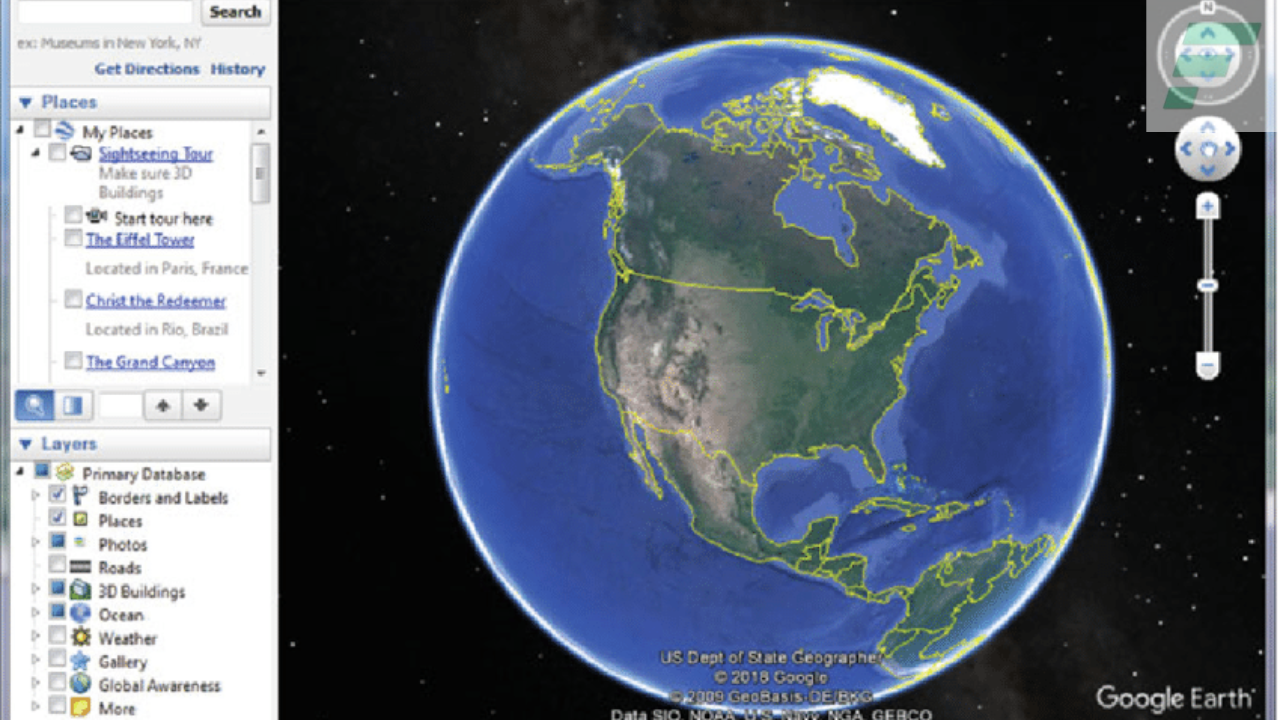Google Earth Live Satellite View Pro Download
Google Earth Live Satellite is a geospatial software application developed by Google that enables users to explore the Earth’s surface, oceans, and other geographic features virtually. It combines satellite imagery, aerial photography, 3D graphics, and GIS data to create a comprehensive and interactive map of the world. Users can zoom in and out, rotate, and navigate through various locations, obtaining a realistic view of places from different angles.
This application was first introduced by Keyhole, Inc. in 2001 and later acquired by Google in 2004, resulting in the creation of Google Earth. Over the years, Google Earth has evolved, incorporating advanced features and expanding its database to provide a more immersive and informative experience to users.
Google Earth serves a multitude of purposes, making it a valuable tool for a diverse range of users. Its primary objectives are as follows:
- Geographic Exploration and Education: Google Earth allows users to virtually explore any location on Earth. It is an excellent educational tool for students, teachers, and researchers to learn about geography, topography, and different cultures.
- Urban Planning and Development: Urban planners and architects utilize Google Earth to assess and plan urban development projects. It provides valuable insights into the existing infrastructure, terrain, and other relevant data necessary for effective planning.
Google Earth Live Satellite View Free Download
Direct Download Link
Rar File Password: 12345

Key Features
Google Earth is packed with features that enhance the user experience and provide valuable information. Here are the key features explained:
- 3D Imagery: Google Earth provides detailed 3D representations of buildings, landmarks, and terrain, offering a realistic view of the environment.
- Street View Integration: Users can access Google Street View directly from Google Earth, allowing a ground-level view of locations and streets.
- Historical Imagery: Users can view historical satellite imagery to observe changes in landscapes and infrastructure over time.
- Measurement Tools: Google Earth offers measurement tools for calculating distances, areas, and elevations within the application.
- Layers and Overlays: Users can overlay additional information like weather patterns, demographic data, and more on the map, enhancing the overall understanding of a location.
- Flight Simulator: Google Earth includes a flight simulator that lets users virtually pilot an aircraft over the Earth’s surface.
- Global Awareness: The software provides information on important global issues like climate change, natural disasters, and cultural heritage, promoting awareness and understanding.
- Tour Creation: Users can create guided tours with custom narration and waypoints to showcase specific locations or journeys.
- Collaboration and Sharing: Google Earth allows users to collaborate on projects, share locations, and create custom maps, enhancing teamwork and information dissemination.
What’s New?
Google Earth constantly evolves, and newer versions bring additional features and improvements. Here are some notable features introduced in the latest version:
- Enhanced 3D Imagery: The latest version offers improved 3D models and textures, providing a more lifelike experience during exploration.
- Integrated Google Maps: Google Earth now seamlessly integrates with Google Maps, allowing users to switch between the two applications effortlessly.
- Real-time Weather Data: Users can now view real-time weather information directly within Google Earth, aiding in trip planning and exploration.
- Improved Search Functionality: The search feature has been refined for quicker and more accurate results, making it easier for users to find specific locations.
- Expanded Data Layers: The new version includes additional data layers, such as ecological zones, which enhance the understanding of various environments and ecosystems.
System Requirements
To run Google Earth smoothly, ensure your system meets the following minimum requirements:
- Operating System:
- Windows: Windows 7 or later
- macOS: OS X 10.8 or later
- Linux: Ubuntu 14/Fedora 23 or equivalent
- Processor:
- Intel Pentium 4, 1.2 GHz or equivalent
- RAM:
- 512 MB
- Graphics Card:
- DirectX 9 or OpenGL with a minimum of 64 MB VRAM
- HDD Space:
- 2 GB free space on the hard drive
- Internet Connection:
- High-speed internet connectivity is recommended for optimal performance and data streaming.
How to Install
To install Google Earth, follow these simple steps:
- Download: Visit the official Google Earth website (earth.google.com) and navigate to the ‘Download’ section.
- Select Operating System: Choose your operating system (Windows, macOS, or Linux) and click on the respective download button.
- Run the Installer: Locate the downloaded file and run the installer. Follow the on-screen instructions to complete the installation process.
- Launch Google Earth: Once the installation is complete, launch Google Earth and start exploring the world!
Conclusion
Google Earth Live Satellite is a remarkable geospatial tool that empowers users to explore our planet in intricate detail without leaving their homes. With its advanced features, immersive experience, and constant updates, Google Earth continues to be a go-to application for educators, researchers, urban planners, and curious minds alike. Stay updated with the latest version to fully leverage its capabilities and embark on a digital journey around the globe.